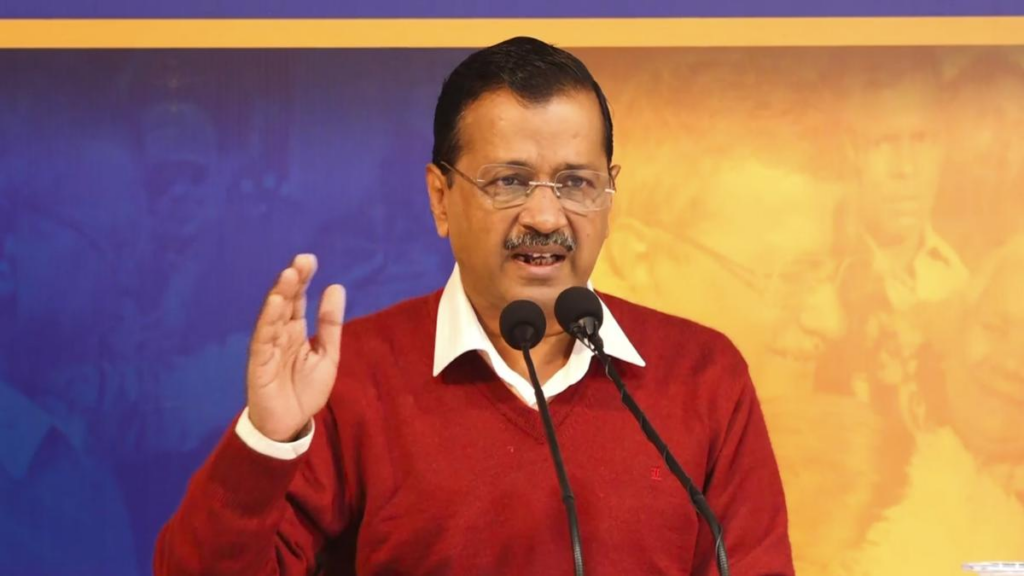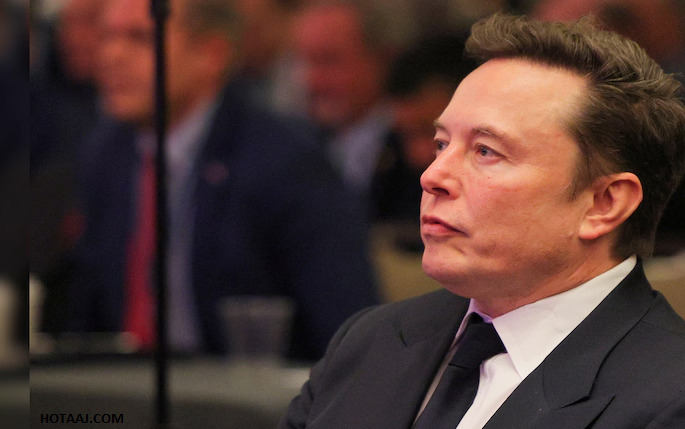“After Two Terms, AAP Faces Scrutiny Over Unfulfilled Promises”

Last week, the Aam Aadmi Party (AAP) made a significant return to its grassroots campaign style, reminiscent of its early days when it first swept to power in the Delhi Assembly in 2013. Known for its emphasis on transparency, honesty, and public engagement, the party has revisited its core principles to reignite the spirit that first resonated with the masses.
In its initial days, AAP’s success was built on its promise to fight corruption, deliver basic services, and bring governance closer to the people. Its leaders, especially Arvind Kejriwal, projected an image of “common man” politics, positioning themselves as the anti-establishment force that was ready to challenge the political elite. The party’s vibrant street-level campaigns, direct interaction with citizens, and appeals for change in governance became a hallmark of their electoral strategy.
This return to its roots is seen as an attempt to reassert AAP’s identity as the party of the people, particularly as it faces mounting challenges in its third term in power. Complaints about unfulfilled promises, growing dissatisfaction over issues such as healthcare and education, and accusations of being disconnected from the public have placed AAP under the microscope.
By revisiting the same campaign style, AAP hopes to reconnect with the electorate and remind voters of its foundational ideals—ensuring good governance, tackling corruption, and addressing the concerns of the common man. The party’s new campaign slogan and messages echo the populist tone that once propelled them to power, aiming to reignite the same enthusiasm and support that helped them carve a place in Delhi’s political landscape.
As the election season intensifies, AAP’s ability to retain the trust of its voters and deliver on its promises will be tested once again. With its renewed focus on grassroots outreach, the party aims to prove that it remains the agent of change it once claimed to be.
A recent poster shared on the Aam Aadmi Party’s (AAP) official X handle highlighted Arvind Kejriwal as the “most honest” leader, emphasizing that his integrity far exceeded that of his “dishonest” rivals. The poster positioned Kejriwal as a beacon of honesty, setting him apart from prominent political figures in India.
The list of “dishonest” leaders, according to the poster, included some of the most influential names in Indian politics. Prime Minister Narendra Modi and Home Minister Amit Shah were listed among the individuals deemed dishonest by the party. Additionally, Leader of the Opposition in the Lok Sabha, Rahul Gandhi, and Sandeep Dikshit, the Congress candidate who is contesting against Kejriwal in the upcoming elections and a two-term Lok Sabha MP, were also included on the list.
This bold move by the AAP is an attempt to emphasize Kejriwal’s image as a leader who stands apart from the traditional political class, often accused of corruption and dishonesty. By comparing him to such high-profile opponents, AAP seeks to rally public support around its central message: that Kejriwal’s leadership is a contrast to the status quo in Indian politics.
Despite both the AAP and Congress being part of the Indian National Developmental Inclusive Alliance (INDIA), the rift between the two parties has grown wider, especially as the 2025 Delhi Assembly elections approach. This division, while not unusual in the heat of election season, highlights the shifting dynamics between the two political forces.
Looking back to the 2013 Delhi Assembly elections, the AAP’s entry into electoral politics marked a dramatic challenge to the political establishment. The party’s campaign was built around its anti-corruption stance, with a strong emphasis on transparency, citizen empowerment, and a fresh approach to governance. At that time, AAP positioned itself as an outsider, determined to overhaul a corrupt political system and challenge the status quo, including established parties like Congress.
Fast forward to 2025, and the picture has dramatically changed. Over the past decade, AAP has successfully transitioned from a grassroots movement to a key player in Indian politics. It has held uninterrupted rule in Delhi and expanded its influence by taking control of Punjab. The party’s growing national presence has made it an undeniable part of the political system it once criticized.
This evolution has resulted in significant shifts in AAP’s approach to governance and its political alliances. Once seen as a reformist force challenging entrenched political structures, the party is now deeply embedded within the system, leading to tensions not just with rivals but within its alliance with Congress. The changes within AAP, both in terms of its internal structure and its shifting political stance, have contributed to the increasing fault lines between the two parties, especially as they vie for influence ahead of the upcoming elections.
For AAP, the question now is whether it can retain the anti-establishment appeal that once propelled it to power, while also managing the growing complexities of being a ruling party with a larger national footprint. The party’s evolving identity and its strategic positioning will be crucial as it navigates these fractures with Congress and its critics.
Facing his toughest political battle yet, Arvind Kejriwal has gone to great lengths to assert his leadership, signaling that several key constituents of the INDIA bloc, such as Trinamool Congress chief Mamata Banerjee and Samajwadi Party leader Akhilesh Yadav, have endorsed AAP over Congress. This move is part of his broader strategy to strengthen his political position ahead of the 2025 Delhi Assembly elections.
This is a stark contrast to the time when AAP first entered the political arena in the wake of the anti-corruption movement led by activist Anna Hazare. Back then, Kejriwal was the self-proclaimed outsider, determined to “cleanse” the political system of corruption. His entry into politics was marked by a clear rejection of the establishment, which he accused of being mired in corruption and inefficiency. At that time, the political parties he now proudly associates with—such as Mamata Banerjee’s Trinamool Congress and Akhilesh Yadav’s Samajwadi Party—were viewed as part of the very system that Kejriwal and his party sought to overthrow.
Kejriwal’s transformation from an outsider to a key player in India’s political system reflects the evolving nature of both his party and his political strategies. While he once painted himself as a crusader against the political elite, today, his alliance with prominent political figures and parties showcases how much the landscape has shifted. The endorsement of his party by figures like Banerjee and Yadav underscores the paradox at the heart of AAP’s current political identity: from the champion of reform to a part of the very system it once criticized.
This shift is a reminder that the nature of political alliances, motivations, and leadership can change dramatically over time. Kejriwal’s current position—balancing his image as a reformist leader with the pragmatic realities of political alliances—highlights the complex journey AAP has undertaken since its inception.
Arvind Kejriwal, over the years, has become synonymous with the fight against the harsher side of the State. From his interventions in restoring power to households whose electricity connections had been cut for non-payment of bills, to his vocal criticism of police actions against street vendors, hawkers, and auto-rickshaw drivers, Kejriwal has positioned himself as the champion of ordinary citizens. His leadership in these matters has crafted his image as the face of the common man’s struggle against state authorities, resonating deeply with voters in Delhi.
Despite Congress coining the slogan “Congress ka haath aam aadmi ke saath” [Congress’ hand is with the common man] during the 2004 Lok Sabha elections, Kejriwal has managed to carry the “aam aadmi” narrative much more effectively. His actions, rooted in addressing the grievances of everyday citizens, have given him an edge in connecting with the public. Where Congress failed to solidify its identity with the common man, Kejriwal and AAP have successfully woven this image into their political persona, making it a central theme of their campaigns. This distinct narrative has helped AAP forge a strong bond with the electorate, which has paid off in their successive victories.
Under scrutiny
After two full terms in power, the Aam Aadmi Party’s (AAP) position as a change agent is facing increasing scrutiny. Once celebrated for its promise to overhaul the political system and deliver on the needs of the common man, AAP now finds itself grappling with growing complaints of unfulfilled promises. Voters who once viewed the party as a fresh alternative to traditional politics are now questioning whether AAP has lived up to its initial commitments. As the 2025 Delhi Assembly elections approach, these mounting concerns over issues such as inadequate public services, unaddressed infrastructure challenges, and perceived failures in governance are threatening to undermine the party’s image as the champion of change.
The AAP, in its defense, asserts that the Centre has consistently undermined the Delhi government by amending laws governing the National Capital Territory (NCT), which has given the Lieutenant Governor (LG) the final say on most key policy matters. This, according to AAP, has hampered their ability to function effectively and deliver on their promises to the people of Delhi.
Additionally, the party’s narrative of being led by “kattarimaandarnetas” (rigidly honest leaders) has taken a hit, particularly following allegations of corruption. Both Arvind Kejriwal and his former deputy, Manish Sisodia, faced jail time in connection with charges of accepting kickbacks to alter the liquor excise policy. These allegations have cast a shadow over their integrity, undermining their earlier image as anti-corruption crusaders.
While the Congress has questioned the necessity of altering the excise policy, the Bharatiya Janata Party (BJP) has seized upon the issue as an example of corruption within the AAP leadership. The controversy surrounding the liquor policy has become a focal point in the political discourse, with the opposition parties using it to tarnish AAP’s reputation as a clean, corruption-free alternative to traditional parties.
Despite AAP’s claims that the alleged liquor scam is fabricated, neither the party nor the Delhi government has provided a convincing rationale for the need to alter an excise policy that had been successfully implemented by previous administrations for over a decade. The lack of a clear explanation regarding the policy change has only fueled suspicions and further eroded the party’s credibility, especially in light of the ongoing corruption allegations.
As the 2025 Delhi Assembly elections draw closer, Mr. Kejriwal and his colleagues are now relying on their 15 guarantees and populist measures, such as free bus travel, subsidized electricity, and water charges for the common man, to salvage their position. These measures, designed to appeal directly to voters, are intended to bolster the party’s appeal in a highly competitive election. However, whether these initiatives can offset the growing dissatisfaction over unfulfilled promises and the corruption charges remains to be seen. The outcome of the election is shaping up to be a closely contested battle, with AAP striving to maintain its hold on power despite the mounting challenges.
Courtesy: India Today
References
- ^ “62-59-turnout-in-delhi-assembly-elections-says-ec-after-kejriwal-questions-delay”. zeenews.india.com. 9 February 2020.
- ^ “A lot at stake than just seven seats in Delhi”. The Economic Times. 11 May 2019. Retrieved 21 May 2019.
- ^ Staff Reporter (15 May 2019). “Hopeful of LS win, Tiwari urges cadre to gear up for 2020 polls”. The Hindu – via www.thehindu.com.
- ^ “Lok Sabha elections over, start working for 2020 Assembly polls without rest: Delhi BJP chief Manoj Tiwari- News Nation”. www.newsnation.in. 15 May 2019. Archived from the original on 20 December 2019. Retrieved 21 May 2019.
- ^ “Lok Sabha election over, BJP to focus on next year’s Delhi polls”. The New Indian Express.
- ^ “Delhi Election Date 2020 announced: Delhi elections 2020 to be held on Feb 8; Results on Feb 11”. The Times of India. Retrieved 6 January 2020.
- ^ AAP releases list of 70 Candidates for Delhi Assembly election www.news18.com
- ^ 2020 Delhi Legislative Assembly Election Results www.placementstore.com
- ^ BJP leaves 3 seats for JDU and LJP The First Post
- ^ [1] NDTV India
- ^ BSP to fight on all seats in Delhi election. The Hindustan Times
- ^ Delhi election – 668 candidates in fray www.indiatoday.in
- ^ “Manifesto 2020 – Aam Aadmi Party”. Archived from the original on 5 February 2020. Alt URL
- ^ Staff Reporter (20 January 2020). “CM launches ‘Guarantee Card'”. The Hindu. Retrieved 12 February 2020.
- ^ “OpenCity – Urban Data Portal”. opencity.in. Retrieved 5 June 2024.
- ^ Press Trust of India New (2 February 2020). “Delhi polls: Congress promises unemployment allowance, cashback schemes, free electricity up to 300 units”. India Today.
- ^ “Dilli Manifesto”. Archived from the original on 5 February 2020. Retrieved 5 February 2020.
- ^ “delhi20 – DELHI SCURVY 2020”. sites.google.com.
- ^ “@AamAadmiParty = 48–53 seats @BJP4Delhi = 15–20 seats @INCDelhi = 0–2 seats #News24DelhiPoll @news24tvchannel”. 5 February 2020.
- ^ “@AamAadmiParty = 20 seats @BJP4Delhi = 48 seats @INCDelhi = 0–2 seats #TV9BharatDelhiPoll @tv9bharattvchannel”. 5 January 2020.
- ^ “ABP-CVoter Opinion Poll: Clean Sweep For AAP In Delhi, Kejriwal Remains First Choice As CM”. news.abplive.com. 6 January 2020. Retrieved 6 January 2020.
- ^ “IANS/C-Voter Delhi tracker shows AAP on winning track”. www.outlookindia.com/. Retrieved 9 January 2020.
- ^ “NewsX-Polstrat Delhi Elections 2020 Opinion Poll: Delhi happy with Arvind Kejriwal govt.’s work in education, health; pollution, jobs, corruption sectors still challenges”. NewsX. 25 January 2020. Retrieved 26 January 2020.
- ^ “Times Now – IPSOS Opinion Poll: Kejriwal set to return as CM, and 4 other takeaways”. www.timesnownews.com. Retrieved 3 February 2020.
- ^ “pic.twitter.com/110fuYqFHa”. @Graphnile. 4 February 2020. Retrieved 4 February 2020.
- ^ “ABP-CVoter Opinion Poll”. news.abplive.com. 5 February 2020. Retrieved 5 February 2020.
Delhi Wants Kejriwal-Led AAP Govt Back, Shaheen Bagh Issue ‘Boosting’ BJP’s Prospect
- ^ Delhi election Exit Poll www.elections.in
- ^ “Spick Media Exit Poll – Delhi Assembly Election 2020 – AAP: 43 – 55 seats BJP: 12 – 21 Seats Congress: 0 – 3 Seats Others: 00 Seats – # DelhiElection #DelhiPolls2020 #DelhiAssemblyPolls #ExitPolls #AAP #BJP #Congress #SpickMedia #Delhipic.twitter.com/Lb6zLVjUXx”. @Spick_Media. 8 February 2020. Retrieved 8 February 2020.
- ^ “Delhi Election 2020 accurate Exit poll – Hamari Yojana”. www.hamariyojana.com. Archived from the original on 13 September 2020. Retrieved 8 February 2020.
- ^ The Hindu (11 February 2020). “Delhi Assembly Elections 2020: AAP sweeps Delhi with 62 seats”. Archived from the original on 15 December 2024. Retrieved 15 December 2024.
- ^ The Indian Express (11 February 2020). “Delhi election result 2020: Full list of winners constituency wise”. Archived from the original on 25 December 2022. Retrieved 25 December 2022.
- ^ Financialexpress (11 February 2020). “Delhi Election 2020: Full list of winners”. Archived from the original on 15 December 2024. Retrieved 15 December 2024.
- ^ “Arvind Kejriwal sworn in as Delhi chief minister at Ramlila Maidan”. www.telegraphindia.com. 16 February 2020. Retrieved 28 May 2022.














